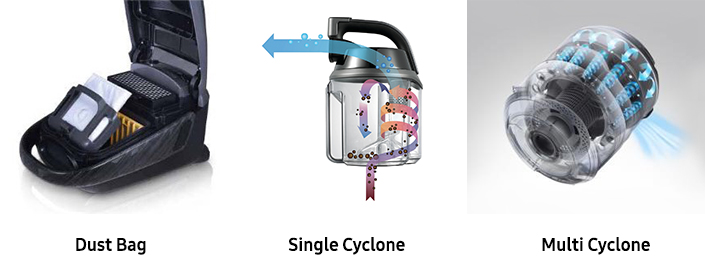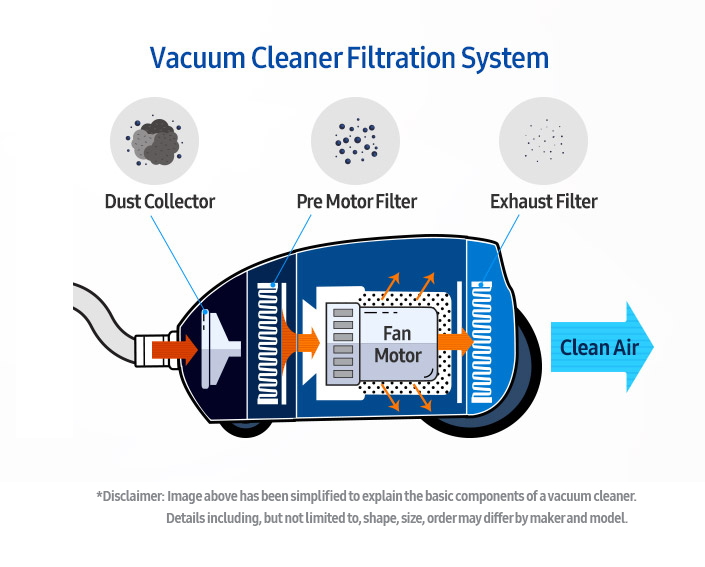A Look Inside Your Vacuum: How it Works
on September 12, 2016
Can you imagine cleaning your carpets without a vacuum? For centuries, people had to manually beat and sweep their rugs – a time and labor intensive process. When the early vacuums came along at the start of the 1900s, the large machines weren’t much better. Some weighed as much as 100 pounds!
Without question, there was great need for high-powered, but maneuverable, cleaning devices.
About 30 years later that need was finally fulfilled, when modern vacuuming revolutionized the cleaning process. Since then, the technology has continued to evolve and advance – vacuums have not only gotten smaller, more powerful and automated, but they have also diversified to better meet people’s unique cleaning needs.
Today, there are four basic vacuum types: the canister, an upright vacuum, the handy & stick and the robot. The four varieties have distinctive pros and cons, but each performs the same function through the same basic process.

At the most basic level, a vacuum works by putting in energy, labor and time. The output is then a hygienic and clean space or surface. But, of course, there’s more to that basic equation than meets the eye.
So what exactly is inside your vacuum that makes it work?
- The Suction Motor. The first component is one of the most important parts. The suction motor creates vacuum pressure and suction by rotating a motor fan. The impeller rotates at an incredibly high speed of about 30,000 to 35,000 RPM. A suction motor’s power is measured by multiplying the rate of air flow and the vacuum pressure, which induces air flow from the brush through the hose.

- Brush. On most modern vacuums, the brush is actually one of many different nozzles, each specifically designed to clean a certain place, surface, room or kind of debris. Vacuuming with the right tool can save significant amounts of time and effort.

- Dust Collector. There are two kinds of dust collectors – one uses a bag, the other does not require bags. A vacuum with a dust bag tends to be light, but the user has to buy and replace the bags at certain intervals. The so-called “bagless” collectors can be further divided into the single cyclone type and multi cyclone type. The single cyclone collector is a bit heavier than a dust bag vacuum, but it sustains suction power longer without changing a bag. The multi cyclone type, on the other hand, is heavier and has more complicated structure inside, but maintains its suction power longer than single cyclone.

- Exhaust Filter. A vacuum’s filtration system has three distinct stages. During the first stage, large dust particles that measure more than 10 micron are separated by either a vacuum bag or bagless cyclone. In the second stage, dust sized from 0.3 to 1 micron are filtered out by a micro filter. And finally, the fine dust or carbon powder are captured by the exhaust filer, allowing clean air to pass out of the vacuum. When the filter is working properly, the vacuum will emit exclusively clean air without dust emission.

So how does it all work together?
When the four parts are put together, the process is simple. Dust and dirt are drawn up via either a brush or another appropriate nozzle through the pipe/hose and into the dust collector. This process is powered by the suction motor and all air is filtered through the exhaust filter to keep debris in the vacuum, while expelling only clean air.
At Samsung, we have spent the last 32 years looking for ways to make that process better for our customers. Since our very first vacuum, the Samsung Canister, was released, we have been continually innovating to make the highest quality vacuums that are faster, more powerful and more convenient.


